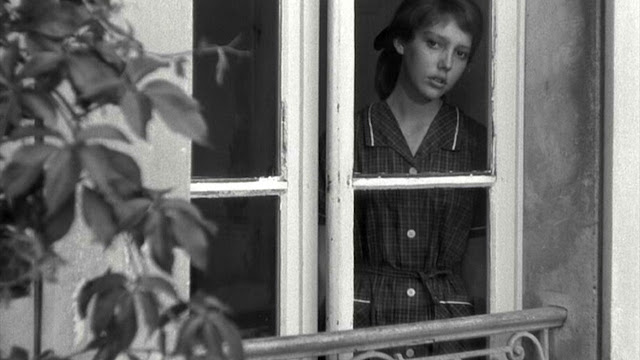Au
Hasard Balthazar
A
film by Robert Bresson
1966/
France/ 95 minutes
21st
Feb 2016/ 5.45 p.m / Peks mini theater
http://konangalfilmsociety.blogspot.in/
Great French master Robert Bresson is one of the saints
of the cinema, and "Au Hasard Balthazar" (1966) is his most
heartbreaking prayer. The film's title character/protagonist is a donkey -- not
a humanoid, Disney donkey but a realistic animal who, in the film's opening
sequence, is adopted by three young children in rural southern France and
"baptized" in their own makeshift religious ceremony.
Balthazar is a farm animal - a donkey - born into a life
of servitude: a beast of burden destined to work the land, carry bales of hay
and provide occasional transportation. His harsh, often exploited existence is
paralleled through the life of Marie, a reticent young woman whose father has
been asked to maintain a friend's farm. The owner's son, Jacques, returns to
the farm to profess his support for Marie's father, whose reputation has been
ruined by debt and rumors surrounding
the ownership of the farm. Jacques is
devoted to Marie, but Marie is drawn to Gerard, a cruel young man. Meanwhile
Balthazar's ownership passes hands to a baker and to Gerard and so on.
French new wave
film maker Godard’s famous claim that Au hasard Balthazar is “the world
in an hour and a half” suggests how dense, how immense Bresson’s brief,
elliptical tale about the life and death of a donkey is. The film’s steady
accumulation of incident, characters, mystery, and social detail, its
implicative use of sound, offscreen space, and editing, have the miraculous
effect of turning the director’s vaunted austerity into endless plenitude,
which is perhaps the central paradox of Bresson’s cinema. So concentrated and
oblique is Balthazar, it achieves the density, to extend Godard’s metaphor just
a little, of an imploded nova.
Au Hasard Balthazar is a haunting, subtly disturbing, and
thematically uncompromising portrait of man's innate cruelty and destructive
impulses. Through the transfiguration of a mistreated animal as an allegorical
symbol of virtue, purity, and redemption, Robert Bresson creates a visually
spare and indelible film of startling intensity: the symbolic image of Marie,
Gerard, and Balthazar in the snow; the framed shot of a humiliated Marie
against the back closet of the farmhouse; the final, sublime shot of Balthazar
with the grazing sheep. Alone in the countryside, wandering and without
direction, Balthazar finds a place of peace...his sanctuary. (Source: Internet)
Robert
Bresson
Robert Bresson’s 13 features over 40 years constitute
arguably the most original and brilliant body of work over a long career from a
film director in the history of cinema. He is the most idiosyncratic and
uncompromising of all major filmmakers, in the sense that he always tried to
create precisely what he wanted without surrendering to considerations of
commerce, audience popularity, or people’s preconceptions of what cinema should
be. And although it might be argued that his venture into colour from Une Femme
douce (1969) onwards was probably against his better judgement, he shows
mastery in its use.
Born in central France and educated in Paris, Bresson’s
early ambition was to be a painter. He ventured into filmmaking with the short
Les Affaires publiques (1934). a satire with nods to Clair and Vigo, which was
rediscovered in the 1980s after being thought lost. After a year or so as a
prisoner-of-war he was approached by a Paris priest with a proposal for a film
about the Bethany order of nuns, which became Les Anges du péché (1943). His
next feature was also made during the Occupation, and filmmaking had by then
definitely supplanted painting. The confusion over his date of birth, symbolic
perhaps of his reclusive nature, caused reviewers of his final filmL’Argent
(1983) to marvel over how a man "in his late 70s" or alternatively
"in his 80s" could show such youthful exuberance in his filmmaking.
A critic once wrote that Mizoguchi’s Sansho Dayu (1954)
"is one of those films for whose sake the cinema exists". For many of
us, the same can be said of the work of Robert Bresson.








No comments:
Post a Comment